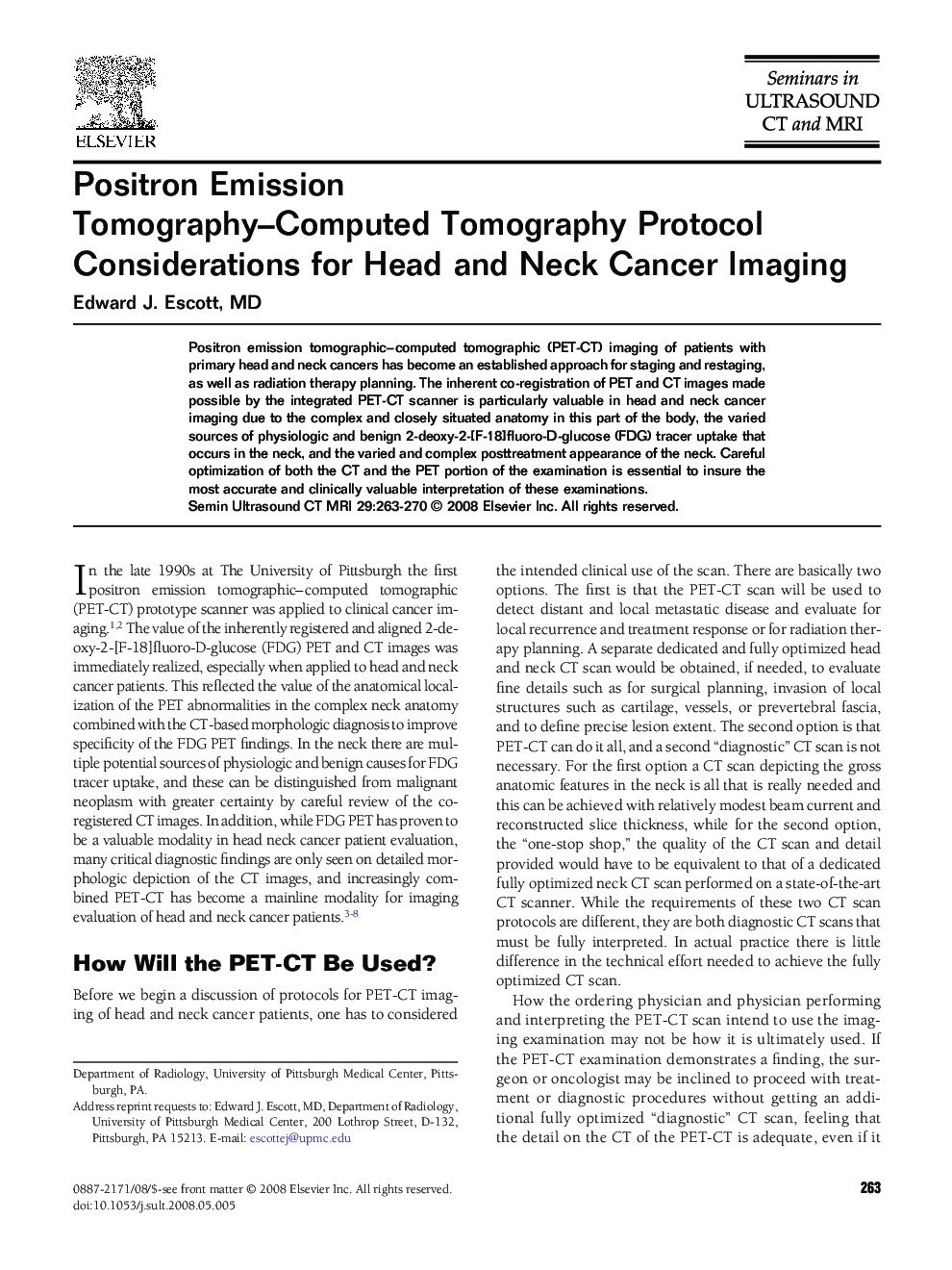| کد مقاله | کد نشریه | سال انتشار | مقاله انگلیسی | نسخه تمام متن |
|---|---|---|---|---|
| 2739333 | 1148381 | 2008 | 8 صفحه PDF | دانلود رایگان |

Positron emission tomographic–computed tomographic (PET-CT) imaging of patients with primary head and neck cancers has become an established approach for staging and restaging, as well as radiation therapy planning. The inherent co-registration of PET and CT images made possible by the integrated PET-CT scanner is particularly valuable in head and neck cancer imaging due to the complex and closely situated anatomy in this part of the body, the varied sources of physiologic and benign 2-deoxy-2-[F-18]fluoro-D-glucose (FDG) tracer uptake that occurs in the neck, and the varied and complex posttreatment appearance of the neck. Careful optimization of both the CT and the PET portion of the examination is essential to insure the most accurate and clinically valuable interpretation of these examinations.
Journal: Seminars in Ultrasound, CT and MRI - Volume 29, Issue 4, August 2008, Pages 263–270